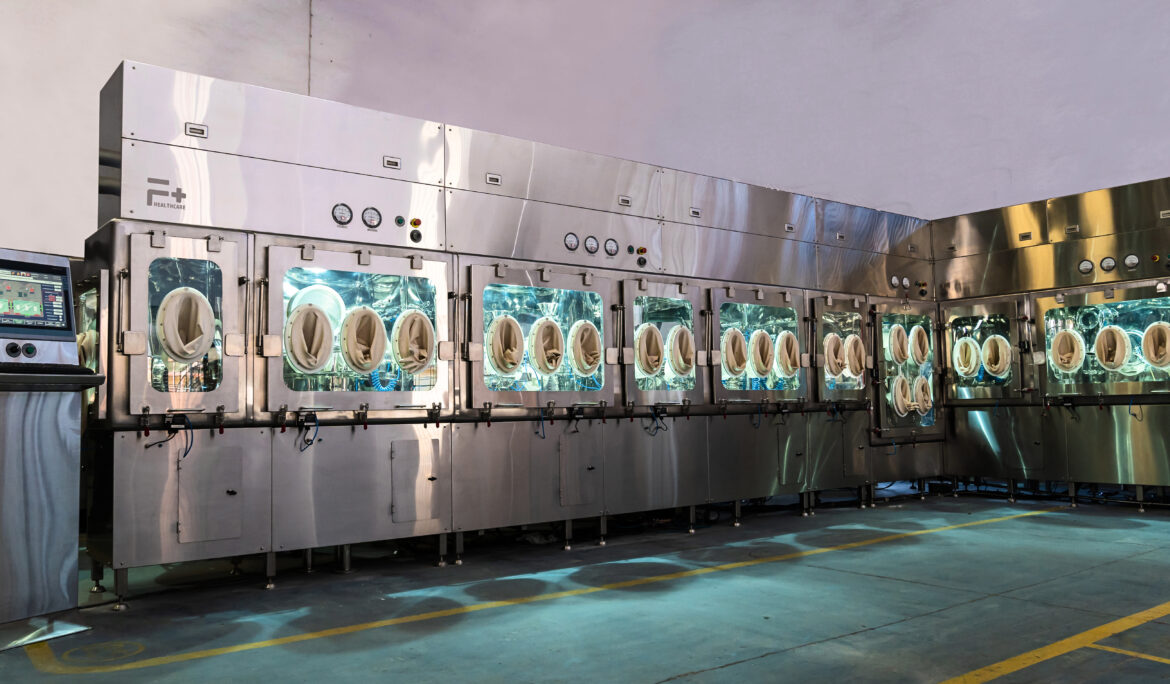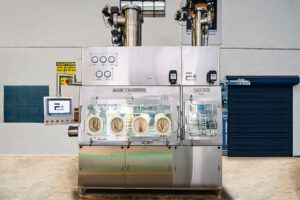Containment System Manufacturer and Solutions with Their Benefits

Containment Systems and Their Benefits Simplified
Containment systems are a vital part of pharmaceutical operations, designed for seamless processes in production. As the name suggests, containment systems are nothing but equipment designed to contain certain substances within a given space that keeps it from being contaminated or from reacting to environmental elements. What’s more is that the containment system also ensures that the environment is not polluted by the substances being contained.
The ISPE’s (International Society of Pharmaceutical Engineering) manual of containment defines a containment system as “a combination of equipment, procedures, and controls that are designed to prevent the release of harmful substances into the workplace, the environment, or the product being manufactured, processed, or handled.”
When designing a containment system for handling hazardous substances in the pharmaceutical industry, several important terms need to be defined and considered.
-
- Occupational Exposure Limits (OELs) and Occupational Exposure Bands (OEBs) help determine the maximum amount of a hazardous substance that workers can be exposed to without significant health risks.
-
- Short-Term Exposure Limits (STELs) are important for substances that may cause acute effects, and need to be monitored carefully during the process.
-
- The Dilution Effect plays a crucial role in determining the appropriate air flow and ventilation systems needed to maintain safe levels of exposure.
-
- The Permitted Daily Exposure (PDE) is important for assessing the safety of drug products and ensuring that they are within safe levels for human consumption. Overall, understanding and defining these terms is essential for creating a safe and effective containment system in the pharmaceutical industry.

In the pharmaceutical industry, specific processes like granulation, tablet compression, tablet coating, capsule filling, vial filling etc. require the use of a containment system to ensure safety and protection. The containment system utilised for each process will depend on the type of material being processed and the specific requirements of the process. Companies may require either aseptic containment isolators or barrier isolators. By using a containment system, companies can ensure optimal safety and quality in their manufacturing processes, protecting workers and the environment from exposure to hazardous substances.
Below are few applications of containment systems in the pharmaceutical industry and their processes.
In API Manufacturing: In the manufacture of Active Pharmaceutical Ingredients (APIs), containment systems are used to protect workers and the environment from exposure to hazardous substances that may be used in the process. This can involve the use of isolators, glove boxes, or other engineering controls to prevent the release of dust, fumes, or vapours into the air
In Formulation: During the formulation of drug products, containment systems are used to protect workers from exposure to active ingredients, excipients, and other chemicals that may be used in the process. This can involve the use of closed systems, isolators, or other engineering controls to prevent the release of dust, fumes, or vapours into the air.
In Packaging: In the packaging of finished drug products, containment systems are used to protect workers from exposure to dust or vapours generated during the process. This can involve the use of closed systems, isolators, or other engineering controls to prevent the release of dust, fumes, or vapours into the air.
In Quality Control: In quality control testing of pharmaceutical products, containment systems may be used to protect workers from exposure to hazardous substances, such as cytotoxic drugs, that may be present in the samples being tested. This can involve the use of glove boxes, fume hoods, or other engineering controls to prevent the release of dust, fumes, or vapours into the air.

As a containment system manufacturer, F Plus Healthcare is dedicated to producing systems that are paramount in quality.
How do containment systems help?
Containment systems are vital in the pharmaceutical industry to control the risks associated with handling potentially harmful materials. Some of the ways they help include:
-
- Preventing the release of hazardous substances into the environment
-
- Minimising the risk of exposing the workers to harmful substances
-
- Preventing product contamination
-
- Maintaining product quality and safety
-
- Promoting responsible manufacturing practices
-
- Ensuring safer working environment during manufacturing, and
-
- Minimising the impact of the substances on the environment
Top of Form
In conclusion
F Plus Healthcare has successfully provided containment system solutions for various applications to customers across the globe, including Algeria, Iran, Iraq, Bangladesh, Sri Lanka, KSA, Vietnam, Thailand, Russia, Philippines, Turkey, Syria, Jordan, Lebanon, Iraq, Iran, Senegal, Cote De Ivoire, South Africa, Tunisia, Malaysia, Belarus, Uzbekistan etc. Taking professional opinion into consideration can further help identify the right application for your processes.
If you are interested in learning more about our portfolio of containment systems and how they can benefit your manufacturing processes, please don’t hesitate to get in touch with one of our representatives. Our team is always available to answer your questions and provide expert guidance to ensure that you get the best solution for your specific needs.

